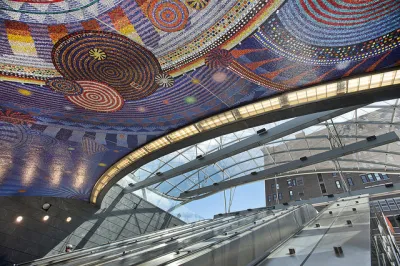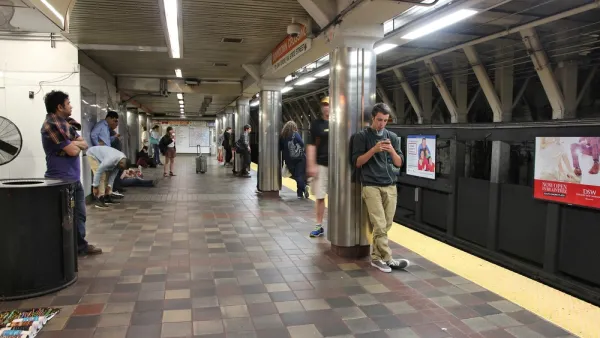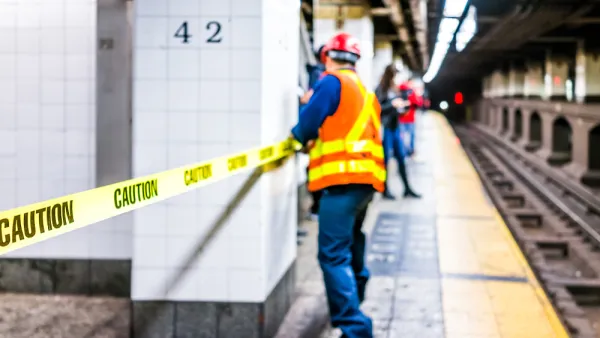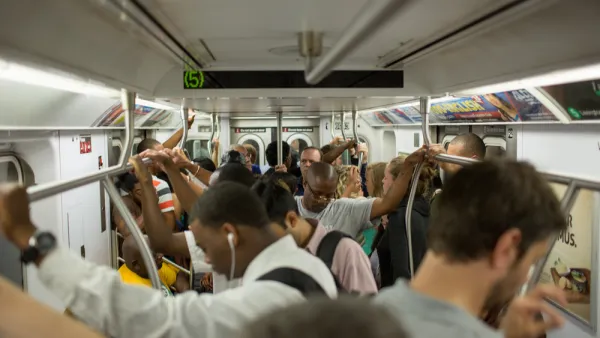It's important for transit to look and feel nice, if only to resurrect its deeply tarnished image in the United States. But ridership depends on good service, not good aesthetics.

For transit riders, beautiful stations and convenient amenities are very welcome. But Yonah Freemark makes an important point about bloated costs. "Anyone who has ever ridden the [New York] Subway knows first hand that its success has nothing to do with aesthetics or access to luxury amenities. Stations are hardly in good shape, trains are packed, and cell service is spotty at best. People ride the Subway in spite of these things; they ride it because it's fast, it's frequent, and it's (relatively) reliable."
When decision-makers favor sleek 21st-century monumentalism, costs soar and service doesn't necessarily improve. "New York's own $4 billion World Trade Center Transportation Hub—perhaps the world's single-most expensive station—is evidence of that; rather than improve service frequency or speed, officials chose to direct public funds to a white monument that does nothing to actually ease the lives of daily commuters."
Freemark cites a recent proposal by Boston's MBTA to cut expenses for its Green Line extension. Simple measures to reduce station sizes and cut out excess canopies and escalators save an impressive $300 million. Other tactics could increase that figure substantially.
Regardless, says Freemark, American transit agencies have been unable to reduce build costs to international standards. Until we can do that, perhaps we should focus on what commuters really care about.
FULL STORY: Frequent service, not escalator access, is what attracts transit users

Analysis: Cybertruck Fatality Rate Far Exceeds That of Ford Pinto
The Tesla Cybertruck was recalled seven times last year.

National Parks Layoffs Will Cause Communities to Lose Billions
Thousands of essential park workers were laid off this week, just before the busy spring break season.

Retro-silient?: America’s First “Eco-burb,” The Woodlands Turns 50
A master-planned community north of Houston offers lessons on green infrastructure and resilient design, but falls short of its founder’s lofty affordability and walkability goals.

Test News Post 1
This is a summary

Analysis: Cybertruck Fatality Rate Far Exceeds That of Ford Pinto
The Tesla Cybertruck was recalled seven times last year.

Test News Headline 46
Test for the image on the front page.
Urban Design for Planners 1: Software Tools
This six-course series explores essential urban design concepts using open source software and equips planners with the tools they need to participate fully in the urban design process.
Planning for Universal Design
Learn the tools for implementing Universal Design in planning regulations.
EMC Planning Group, Inc.
Planetizen
Planetizen
Mpact (formerly Rail~Volution)
Great Falls Development Authority, Inc.
HUDs Office of Policy Development and Research
NYU Wagner Graduate School of Public Service




























